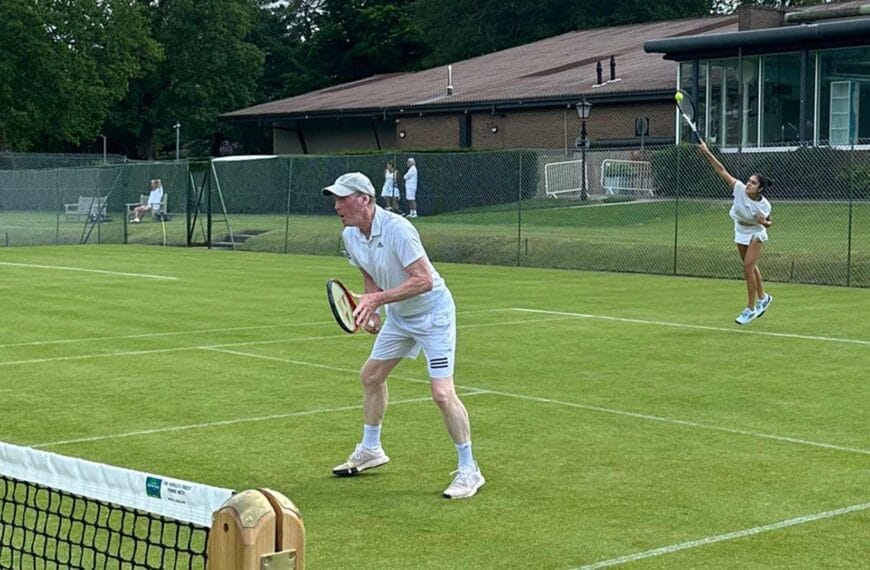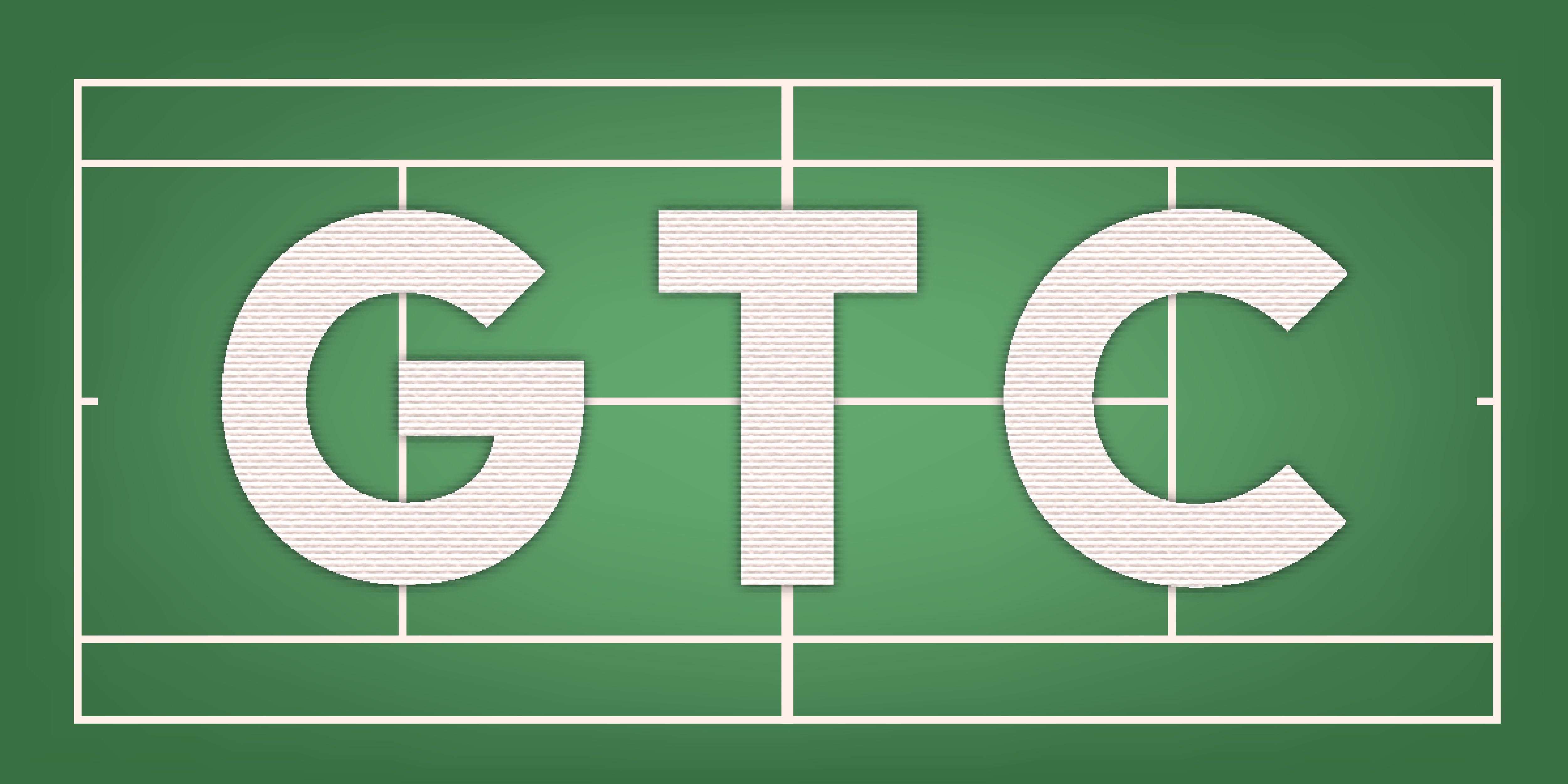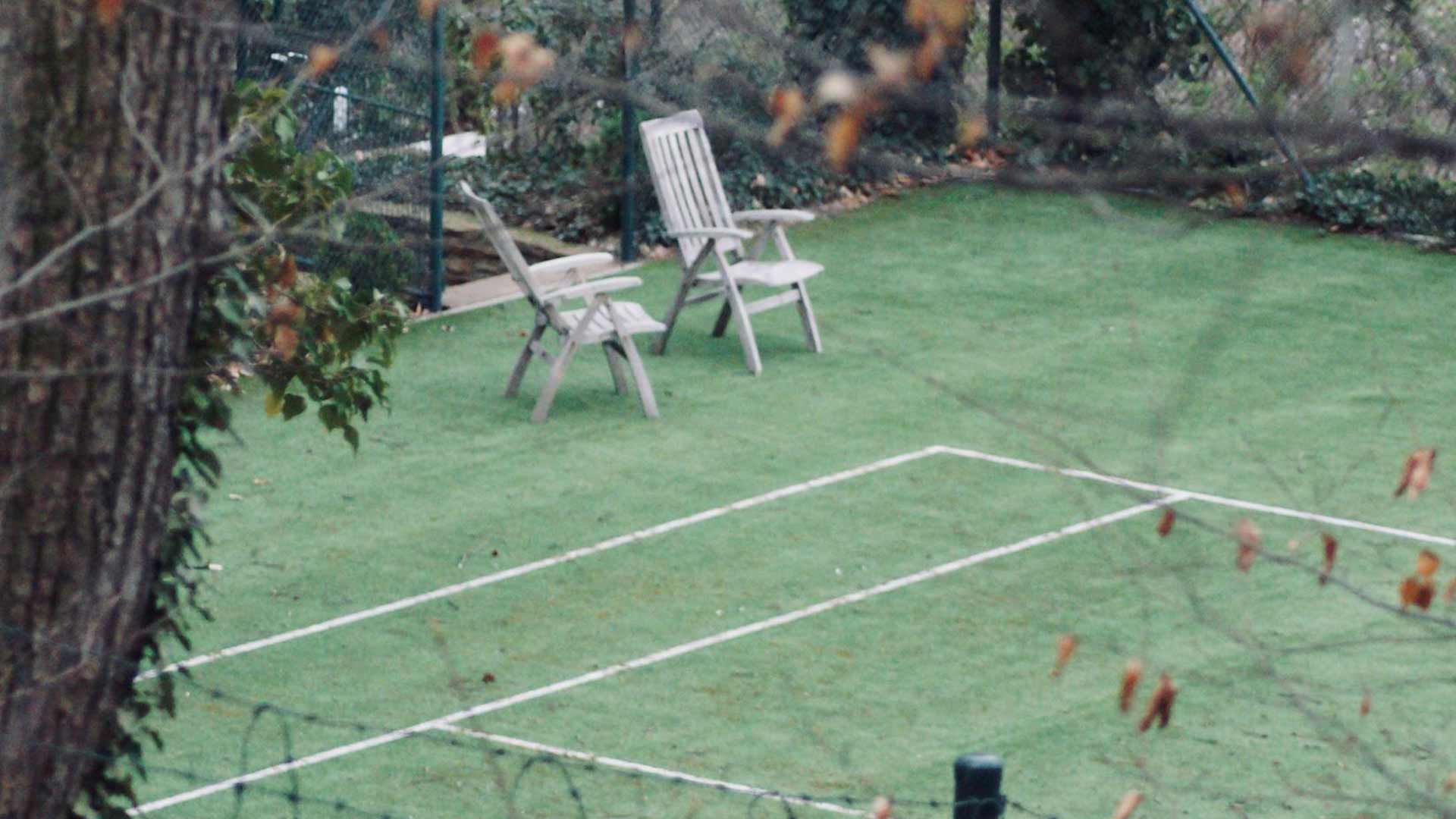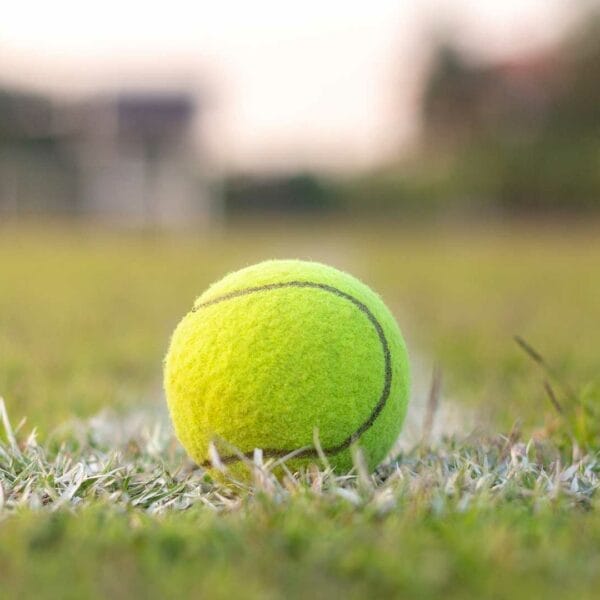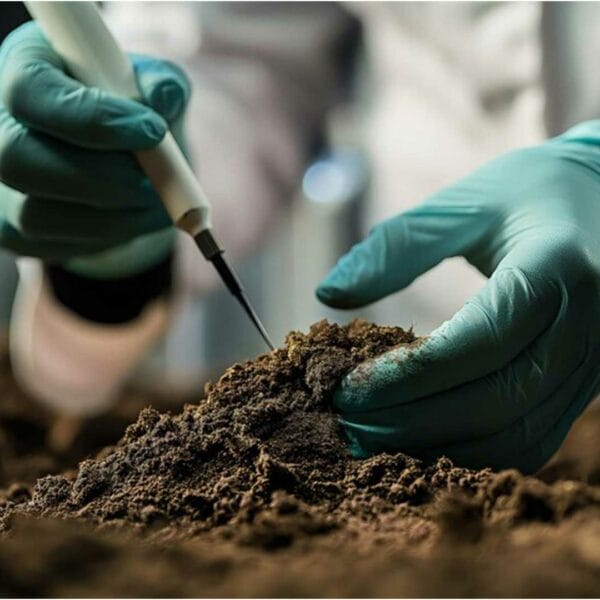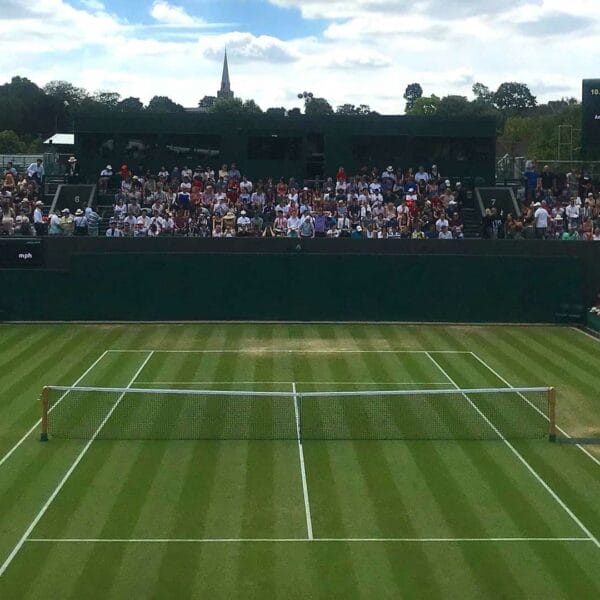How do you ensure evenness on the grass tennis court playing surface?
Importance of Evenness in Grass Tennis Courts
Ensuring evenness on a grass tennis court is crucial for providing an optimal playing experience for athletes. An uneven playing surface can lead to inconsistent ball bounce, reduced player safety, and increased risk of injuries. Moreover, uneven courts may also result in biased gameplay, affecting the overall fairness and integrity of the game.
In professional tennis tournaments, the International Tennis Federation (ITF) sets strict guidelines for maintaining even grass surfaces. The ITF emphasizes that a well-maintained grass court should have a consistent texture, allowing players to move freely without encountering uneven patches or holes. This emphasis on evenness underscores its significance in promoting fair play and ensuring a safe environment for athletes.
The importance of evenness extends beyond the physical aspects of the game. It also has a psychological impact on players, who rely on their ability to anticipate and react to the ball’s movement. An uneven court can disrupt this anticipation, leading to mental fatigue and decreased performance. By prioritizing evenness, tennis clubs and facilities can create an environment that fosters competitive excellence and promotes player satisfaction.
Furthermore, even grass tennis courts are essential for maintaining the health and longevity of the turf itself. Uneven surfaces can lead to waterlogging, erosion, and other issues that compromise the court’s structural integrity. Regular maintenance and upkeep are critical in preventing these problems and extending the lifespan of the grass surface.
Ultimately, achieving evenness on a grass tennis court requires a comprehensive approach that incorporates regular maintenance schedules, precise mowing techniques, effective water management strategies, and targeted fertilization and pest control measures. By understanding the importance of evenness and implementing these strategies, tennis facilities can create a world-class playing surface that meets the needs of athletes at all levels.
Factors Affecting Evenness on Grass Tennis Courts
Several factors contribute to unevenness on grass tennis courts, making it challenging to achieve a consistently smooth playing surface. Understanding these factors is crucial for developing effective strategies to address unevenness and promote evenness.
Weather Conditions
Weather plays a significant role in determining the evenness of a grass tennis court. Extreme temperatures, heavy rainfall, and intense sunlight can cause the grass to grow unevenly, leading to an irregular playing surface. Prolonged periods of drought can cause the grass to become brittle and develop uneven patches, while excessive rain can lead to waterlogging and erosion.
Soil Composition
The type and composition of the soil beneath the grass tennis court also affect evenness. Different soil types have varying drainage capabilities, which can influence the grass’s growth pattern. Sandy soils tend to drain quickly but may require more frequent watering, while clay soils retain moisture longer but can be prone to waterlogging.
Grass Species
The choice of grass species for the tennis court can significantly impact evenness. Some species, such as perennial ryegrass, are more susceptible to wear and tear, leading to uneven patches over time. In contrast, other species, like Bermuda grass, are known for their durability and resistance to wear.
Maintenance Practices
Poor maintenance practices, such as inadequate mowing, incorrect watering, and insufficient fertilization, can all contribute to unevenness on a grass tennis court. Failure to address these issues promptly can exacerbate the problem, making it more challenging to achieve evenness.
Foot Traffic
High foot traffic on a grass tennis court can cause unevenness due to the compaction of the soil. When multiple players walk or run on the court, they exert pressure on the ground, causing the soil particles to compact and the grass to grow unevenly.
Equipment Quality
The quality of equipment used for maintaining the grass tennis court can also impact evenness. Using low-quality mowers, aerators, or dethatchers can damage the grass or leave behind uneven patches, contributing to the overall unevenness of the court.
By understanding these factors and proactively addressing them, tennis facilities can mitigate unevenness and create a consistently smooth playing surface that meets the needs of athletes at all levels. Effective management of these factors is essential for maintaining a world-class grass tennis court that promotes fair play, player safety, and competitive excellence.
Regular Maintenance Schedules for Grass Tennis Courts
Developing a comprehensive regular maintenance schedule is crucial for ensuring evenness on grass tennis courts. A well-planned maintenance routine helps prevent unevenness by addressing potential issues before they escalate into major problems. By incorporating regular maintenance activities into your schedule, you can extend the lifespan of your grass tennis court, reduce the need for costly repairs, and provide a safe and enjoyable playing experience for athletes.
Key Components of a Regular Maintenance Schedule
1. Weekly Mowing
Regular mowing is essential for maintaining evenness on grass tennis courts. Depending on weather conditions and grass growth rates, mow the court once or twice a week. Use a mower with adjustable height settings to maintain a consistent cutting height of 1-2 inches.
2. Watering and Irrigation
Adequate watering is critical for promoting healthy grass growth and preventing unevenness. Develop a watering schedule based on weather conditions, soil type, and grass species. Avoid overwatering, which can lead to waterlogging and erosion.
3. Fertilization and Pest Control
Fertilize your grass tennis court regularly to promote healthy growth and prevent nutrient deficiencies. Apply pest control measures as needed to prevent infestations that can damage the grass.
4. Aeration and Dethatching
Regular aeration and dethatching help improve air circulation, reduce soil compaction, and promote healthy root growth. During peak growing seasons, aeration should be performed every 6-8 weeks, and dethatch should be performed annually to remove dead grass and debris.
5. Compaction Prevention
To minimize the impact of foot traffic on the court, implement compaction prevention techniques, such as reducing foot traffic during peak usage hours or installing shock-absorbing surfaces.
6. Inspections and Repairs
Conduct regular inspections to identify potential issues, such as uneven patches, cracks, or damaged areas. Address these issues promptly to prevent further damage and maintain evenness.
Benefits of Regular Maintenance Schedules
- * Extends the lifespan of the grass tennis court
- * Reduces the need for costly repairs
- * Provides a safe and enjoyable playing experience for athletes
- * Promotes healthy grass growth and prevents unevenness
- * Helps maintain a world-class playing surface that meets the needs of athletes at all levels
By incorporating these key components into your regular maintenance schedule, you can ensure evenness on your grass tennis court and provide a superior playing experience for athletes. Remember to adjust your schedule according to weather conditions, grass growth rates, and soil type to optimize the effectiveness of your maintenance routine.
Mowing Techniques for Achieving Evenness
Achieving evenness on a grass tennis court requires precise mowing techniques. Proper mowing practices help maintain a uniform height, prevent uneven growth patterns, and promote healthy grass development. Here are some essential mowing techniques to consider:
Height Adjustment
Maintain a consistent cutting height of 1-2 inches to promote even growth and prevent excessive wear on the grass. Adjust the mower’s height setting according to the grass species, climate, and time of year.
Mower Type Selection
Choose a mower designed specifically for grass tennis courts, featuring adjustable height settings, wide cutting widths, and robust construction. Consider using a reel mower or a rotary mower with a specialized blade for optimal performance.
Mowing Patterns
Employ a systematic mowing pattern to ensure even coverage and prevent missed spots. Divide the court into sections and mow each area in a consistent direction, typically in a north-south or east-west orientation.
Overlap Reduction
Minimize overlap between passes to avoid creating uneven patches and promote efficient mowing. Use a steady pace and maintain a consistent speed to achieve smooth, even cuts.
Edge Trimming
Pay attention to the edges of the court, where unevenness often occurs due to reduced sunlight and increased wear. Trim the edges carefully using a string trimmer or edger to create a clean, defined border.
Regular Blade Sharpening
Keep the mower blades sharp to prevent tearing the grass and promote even growth. Dull blades can cause uneven cuts, leading to an uneven playing surface.
Mowing Frequency
Adjust the mowing frequency according to weather conditions, grass growth rates, and soil type. Typically, mow the court once or twice a week during peak growing seasons and less frequently during periods of drought or extreme heat.
Implementing these mowing techniques can achieve evenness on your grass tennis court and maintain a world-class playing surface that meets the demands of athletes at all levels.
Water Management Strategies for Grass Tennis Courts
Water management is acrucial formaintaining evenness on grass tennis courts. Adequate watering helps promote healthy grass growth, prevents water stress, and reduces the risk of disease and pests. However, overwatering can lead to shallow root systems, making the grass more susceptible to damage.
Effective water management strategies involve understanding the specific needs of your grass tennis court based on factors such as climate, soil type, and grass species. Here are some key considerations:
Proper Irrigation Systems
Install a reliable irrigation system that delivers water directly to the roots of the grass, reducing evaporation and runoff. Consider using drip irrigation or sprinkler systems with precision nozzles to target specific areas of the court.
Soil Moisture Monitoring
Regularly check soil moisture levels to determine when the grass needs watering. This can be done using soil probes, moisture meters, or by observing visual signs such as wilting or discolouration.
Rainfall Collection and Storage
Implement rainwater harvesting systems to collect and store rainfall for future use. This can reduce the demand on municipal water supplies and minimize the risk of overwatering.
Drought Tolerance
Select grass species that are naturally drought-tolerant or implement drought-resistant technologies such as hydroponics or aeroponics. These systems deliver nutrients directly to the roots, reducing water consumption while promoting healthy growth.
Water Quality Management
Ensure the quality of water used for irrigation by testing for pH levels, nutrient content, and contaminants. Use water treatment systems if necessary to remove impurities and maintain optimal water chemistry.
Scheduling Watering Sessions
Develop a watering schedule based on weather forecasts, soil moisture levels, and grass growth rates. Avoid watering during peak sun hours or when the grass is under stress.
Monitoring Water Consumption
Track water usage to identify areas of inefficiency and optimize irrigation systems accordingly. Consider installing smart sensors or automated controllers to regulate watering sessions based on real-time data.
By implementing these water management strategies, you can maintain optimal hydration levels, promote healthy grass growth, and ensure evenness on your grass tennis court.
Aerating and Dethatching Methods for Improved Evenness
Aerating and dethatching methods pare vital formaintaining evenness on grass tennis courts. These processes help improve drainage, reduce soil compaction, and promote healthy grass growth.
Aeration involves creating small holes in the soil to allow air, water, and nutrients to reach the roots of the grass. There are two primary types of aeration:
1. Spike Aeration: This uses solid tines to puncture the soil and create holes for air and water penetration.
2. Hollow-Tine Aeration: Removes plugs of soil to create holes for improved drainage and aeration.
Regular aeration can help alleviate issues such as:
– Soil compaction: Reduced foot traffic and heavy equipment usage can cause soil compaction, leading to uneven surfaces.
– Thatch buildup: Excessive dead plant material can accumulate, hindering proper drainage and promoting disease.
– Nutrient deficiencies: Inadequate aeration can limit the availability of essential nutrients for grass growth.
Dethatching involves removing dead grass and debris from the surface of the lawn. This process can be performed manually or mechanically using specialized equipment. Effective dethatching methods include:
1. Power raking: Uses rotating blades to loosen and remove dead grass and debris.
2. Manual raking: Involves physically removing dead material with a rake or fork.
3. Vertical mowing: Cuts the grass at an angle to remove dead material and promote new growth.
Benefits of regular aeration and dethatching include:
– Improved drainage and reduced puddling
– Enhanced grass growth and density
– Increased resistance to disease and pests
– Better overall appearance and evenness of the playing surface
Aeration and dethatching must be performed at the right time to maximize their effectiveness. Depending on the climate and grass species, this typically occurs during the growing season, in spring or fall. Consult with a professional turf manager or maintenance expert to determine the best schedule for your specific grass tennis court.
Fertilization and Pest Control Measures
Fertilization and pest control measures are crucial components of maintaining evenness on grass tennis courts. Proper fertilization ensures that the grass receives the necessary nutrients for optimal growth, while effective pest control prevents damage caused by insects, diseases, and weeds.
Types of Fertilizers
Grass tennis courts require a balanced fertilizer that provides essential nutrients such as nitrogen, phosphorus, and potassium. The type of fertilizer used depends on the grass species, climate, and soil conditions. Common types of fertilizers include:
Organic fertilizers: These fertilizers, derived from natural sources like compost, manure, or bone meal, promote healthy soil biota and long-term fertility.
Synthetic fertilizers: Manufactured from chemical compounds, these fertilizers provide quick nutrient release but may cause environmental concerns if overused.
Slow-release fertilizers: Designed to release nutrients gradually, these fertilizers promote consistent growth and minimize waste.
Pest Control Measures
Effective pest control is essential to prevent damage to the grass tennis court. Common pests include white grubs, chinch bugs, and billbugs. Integrated pest management (IPM) strategies involve monitoring for pests, using physical barriers, and applying targeted pesticides when necessary.
– Cultural controls: Modify the environment to discourage pest infestations, such as adjusting mowing heights, watering schedules, and fertilization rates.
– Biological controls: Introduce beneficial organisms like lady beetles or lacewings to prey on pests.
– Chemical controls: Apply targeted pesticides to control severe infestations, following local regulations and safety guidelines.
Best Practices for Fertilization and Pest Control
To ensure evenness on grass tennis courts, follow these best practices:
– Conduct regular soil tests to determine nutrient levels and pH.
– Apply fertilizers according to the recommended schedule and rate.
– Monitor for pests regularly and implement IPM strategies promptly.
– Maintain good hygiene practices, including cleaning equipment and disposing of waste properly.
– Consider hiring a professional turf manager or maintenance expert to develop a customized fertilization and pest control plan.
Implementing effective fertilization and pest control measures can help grass tennis courts achieve optimal evenness, promoting a safe and enjoyable playing experience for athletes.
Compaction Prevention Techniques for Grass Tennis Courts
Compaction prevention techniques pare vital formaintaining evenness on grass tennis courts. Compaction occurs when heavy foot traffic, machinery, or weather conditions compress the soil, leading to reduced drainage, increased soil density, and ,ultimately, uneven surfaces.
To prevent compaction, consider the following strategies:
Soil Compaction Assessment
Regularly assess the soil’s condition to identify areas prone to compaction. This involves evaluating the soil’s moisture levels, density, and structure.
Traffic Management
Implement traffic management plans to reduce the number of players and spectators on the court during peak hours. Crowd control measures, such as designated viewing areas or staggered match scheduling, can reduce this number.
Proper Footwear
To minimize pressure on the soil, encourage players to wear shoes with non-marking soles. Additionally, consider installing shock-absorbing mats or surfaces under high-traffic areas.
Equipment Maintenance
Regularly inspect and maintain equipment, such as mowers and aerators, to ensure they are functioning correctly and not causing unnecessary compaction.
Aerating and Dethatching
Regular aeration and dethatching help improve soil drainage, reduce soil density, and promote healthy root growth. They also help prevent compaction by allowing air, water, and nutrients to penetrate deeper into the soil.
Surface Drainage Systems
Install surface drainage systems, such as French drains or catch basins, to redirect excess water away from the court and reduce the risk of compaction.
Turf Reinforcement
Consider installing turf reinforcement materials, such as geotextiles or turf reinforcement mats, to provide additional support and stability to the soil.
Player Education
Educate players on the importance of avoiding excessive weight and pressure on specific areas of the court. This can be achieved through signage, player briefings, or coaching sessions.
Regular Maintenance Scheduling
Schedule regular maintenance activities, such as aeration, dethatching, and topdressing, to maintain optimal soil health and prevent compaction.
By implementing these compaction prevention techniques, grass tennis courts can maintain evenness, promote healthy turf growth, and provide a safe and enjoyable playing experience for athletes.
Measuring and Monitoring Evenness on Grass Tennis Courts
Measuring and monitoring evenness on grass tennis courts is crucial to identifying areas that require attention and making data-driven decisions for maintenance and improvement. Several methods can be employed to measure and monitor evenness, including:
Visual Inspection
Regular visual inspections by trained personnel can help identify uneven areas, bumps, and dips on the court surface. This method is cost-effective but may lack objectivity.
Tape Measure Method
Using a tape measure to record deviations in height across the court can provide accurate measurements. However, this method is time-consuming and labour-intensive.
Inclinometer Method
An inclinometer measures the angle of the court surface, providing a more precise assessment of evenness. This method is particularly useful for detecting subtle changes in the court’s surface.
Gauge Rod Method
A gauge rod is used to measure the height of the court surface at various points, providing a detailed picture of evenness. This method is commonly used in conjunction with other measurement tools.
Digital Level Method
Digital levels use laser technology to measure the levelness of the court surface, offering high accuracy and speed. This method is ideal for large courts and complex terrain.
Data Loggers
Data loggers can be installed on the court to collect continuous data on temperature, humidity, and other environmental factors that affect evenness. This information can be used to optimize maintenance schedules and make informed decisions.
Evenness Measurement Tools
Specialized tools, such as evenness meters and surface profilers, can quickly and accurately measure the court’s surface irregularities. These tools often come equipped with software for data analysis and reporting.
Establishing a routine maintenance schedule, tracking data over time, and adjusting maintenance practices accordingly are essential for effectively monitoring evenness. By combining multiple measurement methods and analyzing data, grounds staff can identify trends, detect issues early, and implement targeted solutions to maintain an even and safe playing surface.
Best Practices for Ensuring Long-Term Evenness on Grass Tennis Courts
In conclusion, achieving optimal evenness on a grass tennis court requires a comprehensive approach that incorporates regular maintenance schedules, precise mowing techniques, effective water management strategies, aerating and dethatching methods, fertilization and pest control measures, compaction prevention techniques, and meticulous measuring and monitoring. By implementing these best practices consistently, tennis courts can maintain their ideal playing surfaces, ensuring a smooth and consistent gameplay experience for players. Ultimately, prioritizing long-term evenness on grass tennis courts is crucial for promoting player safety, reducing injuries, and enhancing overall game performance. By adopting these evidence-based strategies, facility managers and groundskeepers can create exceptional playing environments that meet the demands of professional and recreational tennis players alike, solidifying their reputation as premier sports facilities.




